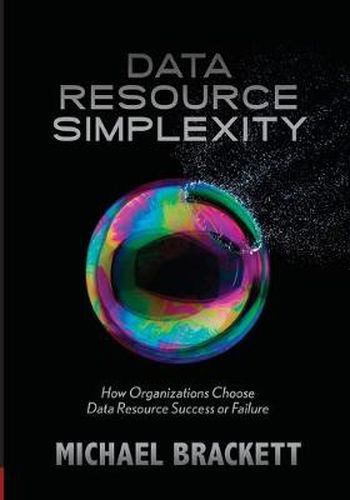Readings Newsletter
Become a Readings Member to make your shopping experience even easier.
Sign in or sign up for free!
You’re not far away from qualifying for FREE standard shipping within Australia
You’ve qualified for FREE standard shipping within Australia
The cart is loading…






This title is printed to order. This book may have been self-published. If so, we cannot guarantee the quality of the content. In the main most books will have gone through the editing process however some may not. We therefore suggest that you be aware of this before ordering this book. If in doubt check either the author or publisher’s details as we are unable to accept any returns unless they are faulty. Please contact us if you have any questions.
Do you fully understand all the data in your organisation’s data resource? Can you readily find and easily access the data you need to support your business activities? If you find multiple sets of the same data, can you readily determine which is the most current and correct? No? Then consider this book essential reading. It will help you develop a high quality data resource that supports business needs. The book explains how a data resource goes disparate, how to stop that trend toward disparity, and how to develop a high quality, comparate data resource. It explains how to stop the costly business impacts of disparate data. It explains both the architectural and the cultural aspects of developing a comparate data resource. It explains how to manage data as a critical resource equivalent to the other critical resources of an organisation – finances, human resource, and real property. Drawing from his nearly five decades of data management experience, plus his leveraging of theories, concepts, principles, and techniques from disciplines as diverse as human dynamics, mathematics, physics, agriculture, chemistry, and biology, Michael Brackett shows how you can transform your organisation’s data resource into a trusted invaluable companion for both business and data management professionals. Chapter 1 reviews the trend toward rampant data resource disparity that exists in most public and private sector organisations today – why the data resource becomes complex. Chapter 2 introduces the basic concepts of planned data resource comparity – how to make the data resource elegant and simple. Chapter 3 presents the concepts, principles, and techniques of a Common Data Architecture within which all data in the organisation are understood and managed. Chapters 4 to 8 present the five architectural aspects of data resource management. Chapter 4 explains the development of formal data names. Chapter 5 explains the development of comprehensive data definitions. Chapter 6 explains the development of proper data structures. Chapter 7 explains the development of precise data integrity rules. Chapter 8 explains the management of robust data documentation. Chapters 9 through 13 present the five cultural aspects of data resource management. Chapter 14 presents a summary explaining that development of a comparate data resource is a cultural choice of the organisation and the need for a formal data resource management profession.
$9.00 standard shipping within Australia
FREE standard shipping within Australia for orders over $100.00
Express & International shipping calculated at checkout
This title is printed to order. This book may have been self-published. If so, we cannot guarantee the quality of the content. In the main most books will have gone through the editing process however some may not. We therefore suggest that you be aware of this before ordering this book. If in doubt check either the author or publisher’s details as we are unable to accept any returns unless they are faulty. Please contact us if you have any questions.
Do you fully understand all the data in your organisation’s data resource? Can you readily find and easily access the data you need to support your business activities? If you find multiple sets of the same data, can you readily determine which is the most current and correct? No? Then consider this book essential reading. It will help you develop a high quality data resource that supports business needs. The book explains how a data resource goes disparate, how to stop that trend toward disparity, and how to develop a high quality, comparate data resource. It explains how to stop the costly business impacts of disparate data. It explains both the architectural and the cultural aspects of developing a comparate data resource. It explains how to manage data as a critical resource equivalent to the other critical resources of an organisation – finances, human resource, and real property. Drawing from his nearly five decades of data management experience, plus his leveraging of theories, concepts, principles, and techniques from disciplines as diverse as human dynamics, mathematics, physics, agriculture, chemistry, and biology, Michael Brackett shows how you can transform your organisation’s data resource into a trusted invaluable companion for both business and data management professionals. Chapter 1 reviews the trend toward rampant data resource disparity that exists in most public and private sector organisations today – why the data resource becomes complex. Chapter 2 introduces the basic concepts of planned data resource comparity – how to make the data resource elegant and simple. Chapter 3 presents the concepts, principles, and techniques of a Common Data Architecture within which all data in the organisation are understood and managed. Chapters 4 to 8 present the five architectural aspects of data resource management. Chapter 4 explains the development of formal data names. Chapter 5 explains the development of comprehensive data definitions. Chapter 6 explains the development of proper data structures. Chapter 7 explains the development of precise data integrity rules. Chapter 8 explains the management of robust data documentation. Chapters 9 through 13 present the five cultural aspects of data resource management. Chapter 14 presents a summary explaining that development of a comparate data resource is a cultural choice of the organisation and the need for a formal data resource management profession.